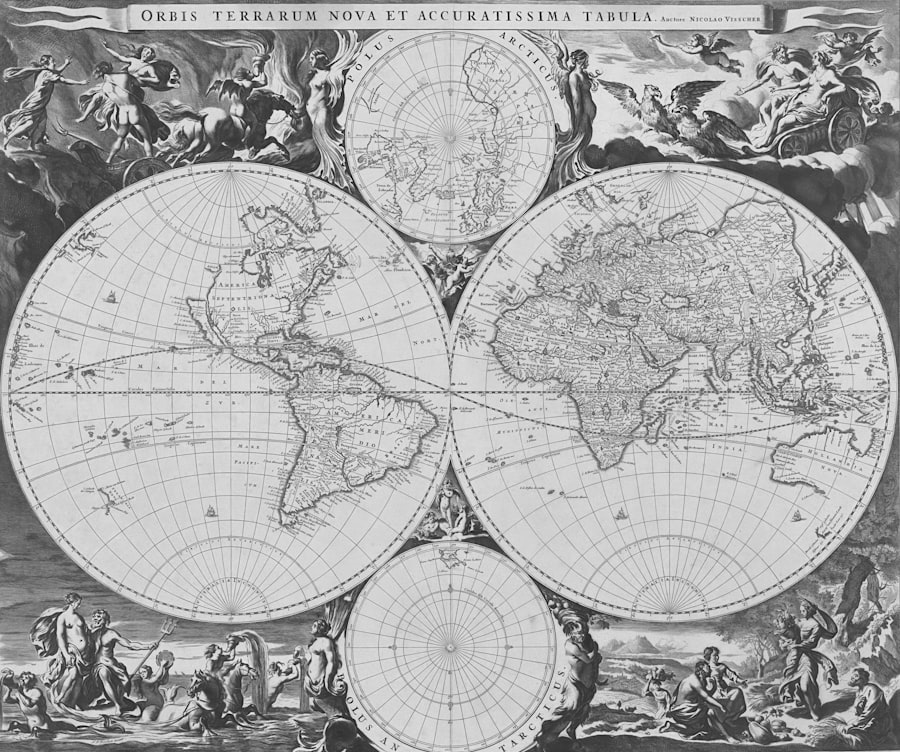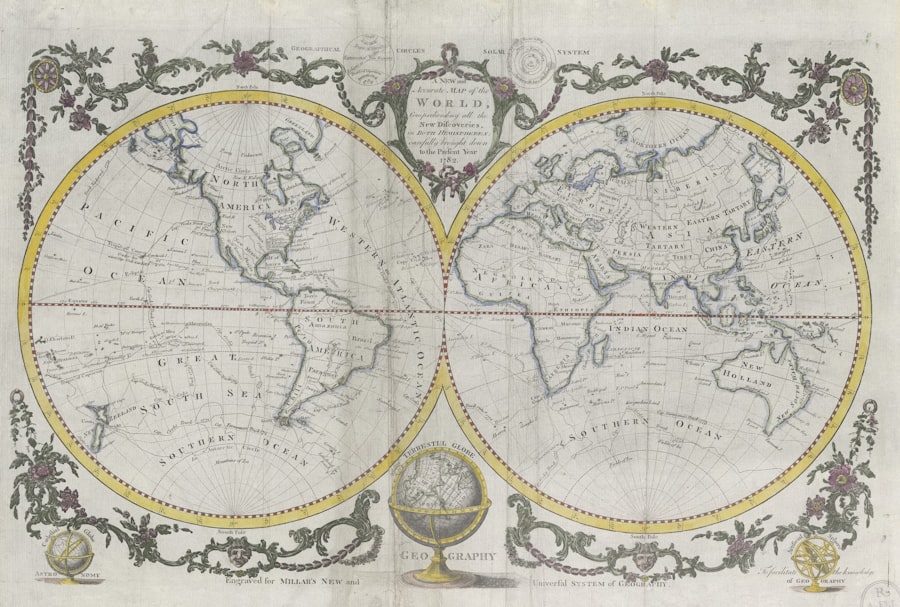The transition from the Gupta Empire to the reign of Harshvardhan marks a significant chapter in Indian history, characterized by a complex interplay of political, social, and cultural dynamics. The Gupta Empire, often heralded as a golden age of Indian civilization, witnessed remarkable advancements in art, science, and philosophy. However, by the mid-6th century, this illustrious empire began to unravel under the weight of internal strife and external pressures.
Concurrently, Harshvardhan emerged as a formidable ruler who sought to unify northern India and restore the glory that had been lost. His ascendance not only filled the power vacuum left by the declining Guptas but also set the stage for a new era in Indian history. The decline of the Gupta Empire and the rise of Harshvardhan are interlinked phenomena that reflect broader historical trends.
The Gupta period is often romanticized for its cultural achievements, yet it was also a time of significant challenges that ultimately led to its fragmentation.
Understanding this transition requires an exploration of the factors that contributed to the Gupta Empire’s decline and how Harshvardhan capitalized on these circumstances to forge his own legacy.
Key Takeaways
- The Gupta Empire was a powerful and prosperous dynasty in ancient India, known for its cultural and scientific achievements.
- Factors contributing to the decline of the Gupta Empire included weak leadership, invasions by the Huns, and economic instability.
- Harshvardhan, a ruler from the north Indian kingdom of Thanesar, rose to power and pushed back against the decline of the Gupta Empire.
- Harshvardhan’s achievements included expanding his kingdom, promoting the arts and culture, and fostering religious tolerance.
- The decline of the Guptas and the rise of Harshvardhan had a lasting impact on Indian history, shaping the political and cultural landscape for centuries to come.
The Gupta Empire: A Brief Overview
Intellectual and Artistic Achievements
This period is celebrated for its remarkable achievements in various fields, including mathematics, astronomy, literature, and art. The concept of zero as a numeral was developed during this time, and scholars like Aryabhata made groundbreaking contributions to mathematics and astronomy. The flourishing of trade routes facilitated economic prosperity, while the patronage of arts led to exquisite sculptures and architectural marvels.
Cultural Synthesis and Religious Tolerance
Culturally, the Gupta Empire was marked by a synthesis of various traditions and ideas. The period saw the rise of classical Sanskrit literature, with poets like Kalidasa producing timeless works that continue to be revered today. The empire also witnessed significant developments in religious thought, with Hinduism gaining prominence alongside Buddhism and Jainism. The Gupta rulers were known for their religious tolerance, which fostered an environment where diverse beliefs could coexist.
Lasting Legacy
This cultural renaissance laid the groundwork for future developments in Indian civilization, making the Gupta Empire a pivotal era in the subcontinent’s history.
Factors Contributing to the Decline of the Gupta Empire

The decline of the Gupta Empire can be attributed to a confluence of internal weaknesses and external threats that gradually eroded its power. One of the primary internal factors was political fragmentation. Following the death of Skandagupta around 467 CE, the empire faced succession crises and infighting among various factions.
The lack of a strong central authority led to regional governors asserting their independence, weakening the cohesion that had characterized earlier Gupta rule. This fragmentation made it increasingly difficult for the empire to respond effectively to external challenges. In addition to political instability, economic decline played a crucial role in the empire’s downfall.
The Gupta economy relied heavily on agriculture and trade; however, over time, heavy taxation and administrative inefficiencies strained agricultural productivity. Natural disasters such as droughts or floods further exacerbated these economic woes. As trade routes became less secure due to rising regional powers and invasions, economic decline accelerated.
The loss of revenue from trade diminished the empire’s ability to maintain its military and administrative apparatus, leading to further disintegration. External invasions also significantly contributed to the decline of the Gupta Empire. The Huna invasions in the 5th and 6th centuries CE posed a formidable threat to Gupta stability.
These nomadic tribes from Central Asia launched repeated incursions into northern India, exploiting the weakened state of the empire. The Guptas struggled to mount an effective defense against these invasions due to their internal divisions and depleted resources. The Huna invasions not only resulted in territorial losses but also instilled fear and uncertainty among the populace, further undermining loyalty to Gupta rule.
The Rise of Harshvardhan and the Pushback Against Gupta Decline
In the wake of the Gupta decline, Harshvardhan emerged as a significant figure who sought to restore stability and unity in northern India. Born into a royal family in 590 CE, he ascended to power after the death of his brother, who had ruled over Thanesar in present-day Haryana. Harshvardhan’s early reign was marked by military conquests that expanded his territory significantly.
He managed to unite various smaller kingdoms under his banner, effectively filling the power vacuum left by the disintegration of Gupta authority. Harshvardhan’s rise was not merely a result of military prowess; he was also an astute administrator who understood the importance of governance in maintaining control over his diverse realm. He established a centralized administration that emphasized justice and welfare for his subjects.
His capital at Kannauj became a hub of cultural and political activity, attracting scholars, poets, and artists from across India. This cultural renaissance under Harshvardhan mirrored some aspects of the earlier Gupta period but was distinct in its emphasis on promoting Buddhism alongside Hinduism. The pushback against Gupta decline was not solely about military conquest; it also involved fostering a sense of identity among his subjects.
Harshvardhan actively promoted religious tolerance and patronized both Buddhism and Hinduism, which helped him gain support from various communities. His efforts to revive trade routes and encourage commerce contributed to economic recovery in his territories. By establishing diplomatic relations with neighboring kingdoms and engaging in cultural exchanges, Harshvardhan sought to create a cohesive political entity that could withstand external threats.
Harshvardhan’s Achievements and Contributions to Indian History
Harshvardhan’s reign is marked by several notable achievements that have left an indelible mark on Indian history. One of his most significant contributions was his role in promoting education and scholarship. He established universities that attracted scholars from far and wide, fostering an environment conducive to intellectual growth.
The Nalanda University, which flourished during this period, became one of the foremost centers of learning in ancient India, drawing students from regions as distant as China and Tibet. In addition to his contributions to education, Harshvardhan is remembered for his patronage of arts and literature. He himself was a poet and playwright, composing works that reflected his philosophical beliefs and cultural values.
His court became a vibrant center for artistic expression, where poets like Bana wrote epic narratives celebrating Harshvardhan’s exploits. This cultural flourishing not only enriched Indian literature but also laid the groundwork for future artistic endeavors. Harshvardhan’s commitment to social welfare is another hallmark of his reign.
He organized large-scale charitable events, including medical camps and almsgiving festivals that provided aid to those in need. His emphasis on public welfare resonated with his subjects and helped solidify his reputation as a benevolent ruler. Furthermore, his efforts to promote Buddhism contributed to its resurgence during this period, as he actively supported Buddhist monasteries and institutions.
Legacy of the Decline of Guptas and Rise of Harshvardhan

The decline of the Gupta Empire and the subsequent rise of Harshvardhan had profound implications for Indian history that extended far beyond their respective reigns. The fragmentation of Gupta authority paved the way for regional powers to emerge across northern India, leading to a more decentralized political landscape. This shift allowed for greater diversity in governance styles and cultural expressions but also resulted in increased competition among emerging kingdoms.
Harshvardhan’s legacy is multifaceted; he is often viewed as a unifying figure who sought to restore stability during a time of chaos. His efforts in promoting education, arts, and social welfare set a precedent for future rulers who would look to him as an exemplar of enlightened leadership. The cultural renaissance during his reign laid important foundations for subsequent developments in Indian art and literature.
Moreover, Harshvardhan’s reign marked a transitional phase between ancient Indian empires and later medieval kingdoms. His interactions with neighboring regions fostered diplomatic ties that would influence future political dynamics in South Asia. The legacy of both the Gupta decline and Harshvardhan’s rise serves as a reminder of how historical narratives are shaped by complex interactions between power structures, cultural movements, and individual agency within broader societal contexts.
In summary, understanding this period requires an appreciation for how these historical events interweave with broader themes in Indian history—such as cultural exchange, political fragmentation, and social evolution—ultimately shaping the trajectory of Indian civilization for centuries to come.
If you are interested in exploring ancient philosophies and thinkers, you may enjoy reading about the Decline of Guptas and Rise of Harshvardhan. This period of Indian history is filled with political intrigue and power struggles, much like the theories of truth – correspondence, coherence, and pragmatic. To delve deeper into the intellectual landscape of the time, check out this article on Ancient Greek philosophy, which examines the thinkers of Thales, Anaximander, Anaximenes, Pythagoras, Heraclitus, Democritus, Parmenides, and Zeno. Click here to read more!
FAQs
What led to the decline of the Guptas?
The decline of the Guptas can be attributed to a combination of factors including weak rulers, invasions by the Huns, and economic instability. The weakening of central authority and the loss of territories also contributed to their decline.
Who were the Huns and how did they contribute to the decline of the Guptas?
The Huns were a nomadic group from Central Asia who invaded and plundered Gupta territories, leading to the weakening of the Gupta Empire. Their invasions disrupted trade and agriculture, leading to economic instability and further weakening the Gupta rulers.
How did the rise of Harshvardhan impact the political landscape of India?
The rise of Harshvardhan, also known as Harsha, led to the establishment of a large empire in northern India. He was a patron of the arts and literature, and his reign saw a period of cultural and intellectual growth. However, his empire did not last long after his death, leading to further political fragmentation in India.
What were some of the achievements of Harshvardhan’s reign?
During Harshvardhan’s reign, he established a strong central authority, promoted trade and commerce, and patronized the arts and literature. He also organized religious assemblies and was known for his tolerance towards different religious beliefs.
How did the decline of the Guptas and the rise of Harshvardhan impact the cultural and intellectual landscape of India?
The decline of the Guptas and the rise of Harshvardhan led to a period of political fragmentation and instability in India. However, it also saw a flourishing of art, literature, and intellectual pursuits, with Harshvardhan’s patronage contributing to a rich cultural and intellectual landscape during this period.






















+ There are no comments
Add yours